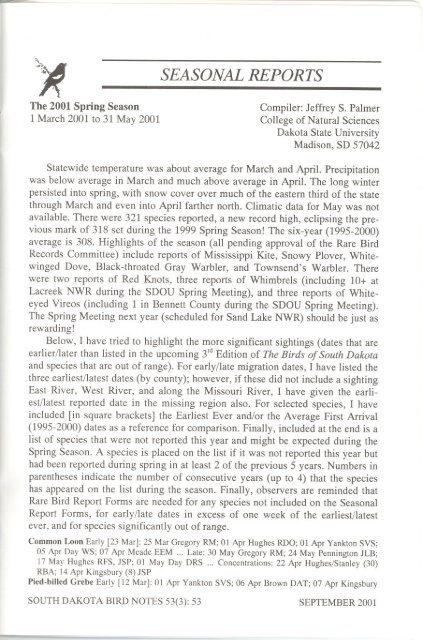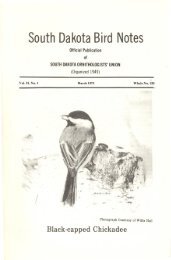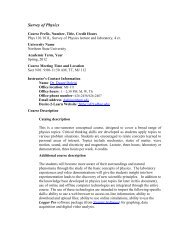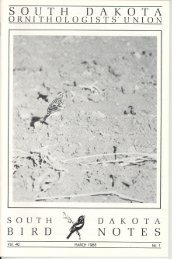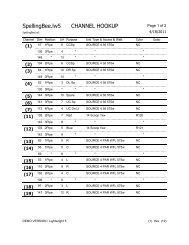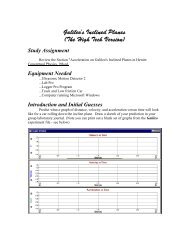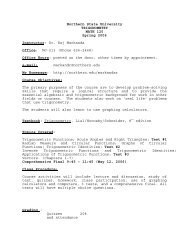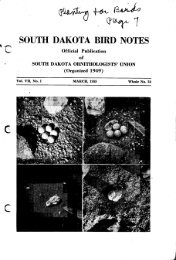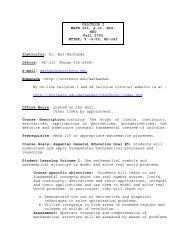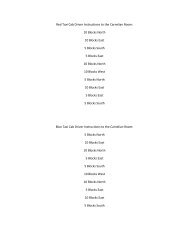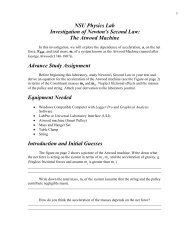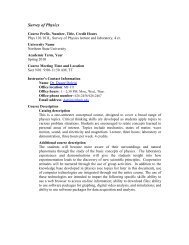Vol 53, 2001 - Northern State University
Vol 53, 2001 - Northern State University
Vol 53, 2001 - Northern State University
You also want an ePaper? Increase the reach of your titles
YUMPU automatically turns print PDFs into web optimized ePapers that Google loves.
~SEASONAL REPORTSThe <strong>2001</strong> Spring Season1 March <strong>2001</strong> to 31 May <strong>2001</strong>Compiler: Jeffrey S. PalmerCollege of Natural SciencesDakota <strong>State</strong> <strong>University</strong>Madison, SD 57042<strong>State</strong>wide temperature was about average for March and April. Precipitationwas below average in March and much above average in April. The long winterpersisted into spring, with snow cover over much of the eastern third of the statethrough March and even into April farther north. Climatic data for May was notavailable. There were 321 species reported, a new record high, eclipsing the previousmark of 318 set during the 1999 Spring Season! The six-year (1995-2000)average is 308. Highlights of the season (all pending approval of the Rare BirdRecords Committee) include reports of Mississippi Kite, Snowy Plover, WhitewingedDove, Black-throated Gray Warbler, and Townsend's Warbler. Therewere two reports of Red Knots, three reports of Whimbrels (including 10+ atLacreek NWR during the SDOU Spring Meeting), and three reports of WhiteeyedVireos (including 1 in Bennett County during the SDOU Spring Meeting).The Spring Meeting next year (scheduled for Sand Lake NWR) should be just asrewarding!Below, I have tried to highlight the more significant sightings (dates that areearlier/later than listed in the upcoming 3rdEdition of The Birds of South Dakotaand species that are out of range). For early/late migration dates, I have listed thethree earliest/latest dates (by county); however, if these did not include a sightingEast River, West River, and along the Missouri River, I have given the earliest/latestreported date in the missing region also. For selected species, I haveincluded [in square brackets] the Earliest Ever and/or the Average First Arrival(1995-2000) dates as a reference for comparison. Finally, included at the end is alist of species that were not reported this year and might be expected during theSpring Season. A species is placed on the list if it was not reported this year buthad been reported during spring in at least 2 of the previous 5 years. Numbers inparentheses indicate the number of consecutive years (up to 4) that the specieshas appeared on the list during the season. Finally, observers are reminded thatRare Bird Report Forms are needed for any species not included on the SeasonalReport Forms, for early/late dates in excess of one week of the earliest/latestever, and for species significantly out of range.CommonLoonEarly[23Mar]:25MarGregoryRM;01 AprHughesRDO;01 AprYanktonSVS;05 AprDayWS;07 Apr MeadeEEM ... Late:30 MayGregoryRM;24 MayPenningtonJLB;17 MayHughesRFS,JSP; 01 May Day DRS ... Concentrations:22 Apr Hughes/Stanley(30)RBA; 14 Apr Kingsbury (8) JSPPied-billedGrebe Early[12Mar]:01 AprYanktonSVS;06 AprBrownDAT;07 AprKingsburySOUTH DAKOTA BIRD NOTES <strong>53</strong>(3): <strong>53</strong> SEPTEMBER <strong>2001</strong>


